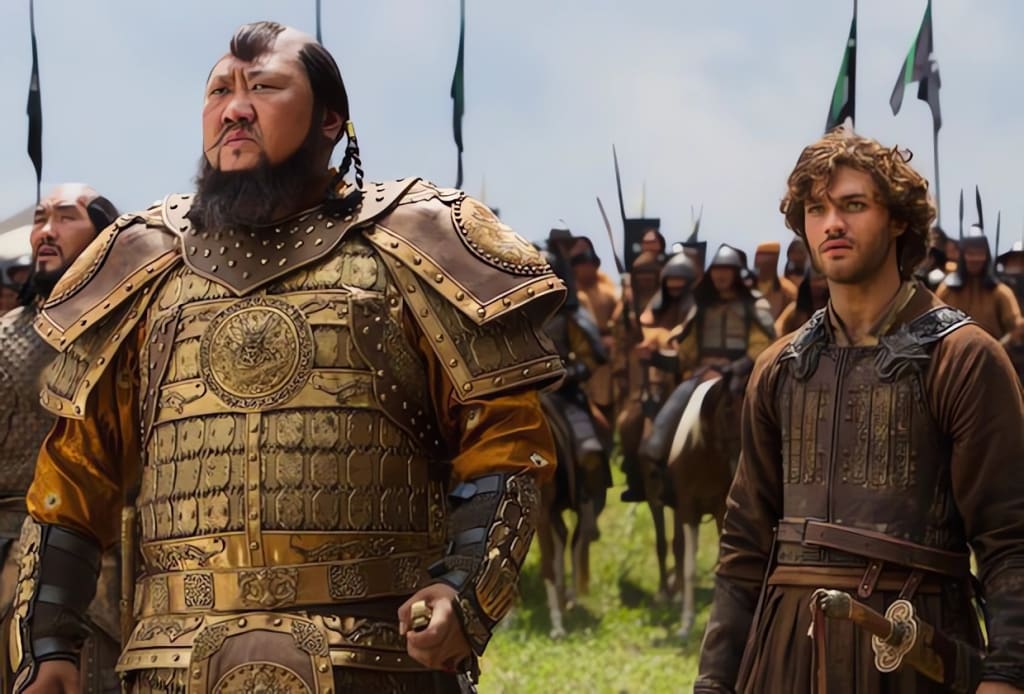
In November 1951, a group of workers linked to Mao Tse-tung's revolutionary army made an intriguing discovery while demolishing the medieval era wall of Yanzhou. The workers came across a block completely different from the others, and it didn't take long for them to notice that strange drawings were engraved on it, as well as decorative elements and writing in a mysterious language. The workers suspected that it was the piece of a tomb, possibly a tombstone. This discovery raises questions about the possibility of stable European communities living in China during the Middle Ages. What was written on that mysterious stone, and what is the relationship of this discovery with other artifacts found years later? Was Marco Polo really the first European to set foot in China?
This investigation connects two different historical and geographical scenarios, and it is important to note that since ancient times, some contacts between East and West have existed, but indirectly mainly due to the commercial exchanges established along the famous silk route. However, it is known that with the Byzantine emperor Justinian, some Chinese diplomats were received in Constantinople, and there was trade along the silk route. The Emperor even sent two spies to bring silkworms in order to end the Chinese monopoly on the product. But there is no evidence that the spies sent were in fact Europeans. In the century following, mentions of Europeans visiting Asia occurred, but none of them reached the Far East, and therefore none of them specifically visited China.
With the advent of the European movement of the Crusades, it was only in the middle of the 13th century that the first Europeans visited the Far East. As far as we know today, it was the Catholic religious missions that were responsible for establishing the first direct contacts with the Far East. The famous Venetian explorer and merchant Marco Polo was born only in 1254, and in this same year, another Franciscan missionary, the Dutch William of Rubro, managed to reach Mongolia. Marco Polo's father and uncle would only have reached the Far East in the year 1266, and Marco Polo himself only made it on another trip in the year 1275.
However, the discovery of a mysterious tombstone in China in 1951 proved that not only European adventurers and friars visited China in the Middle Ages, but also European families migrated to the Far East and came to form small stable communities in China in the middle of the 14th century. The tombstone was from a woman called Caterina Devilionis, and its Italian origin is too much for the time. The specific artistic style of the decoration of its borders is typical of the north of the Italic peninsula, and the font used in the engraving demonstrates a certain dexterity and even refinement of the artist. The absence of feet on the angels is a typical feature of Chinese art of the period, which denotes a certain originality in the style of the author who sought different references to do his job.
The tombstone was found in the foundations of an ancient city wall of Ian, and some historians see how clear that it would have occurred 15 years after Caterina's burial, around 1357, when, in the midst of the revolt of the red turbans and hooks, it was taken by the Rebel forces that would found the Ming dynasty in that place. The leaders of the revolt knowingly reused masonry materials from the city to build the walls of Yanzhou in its 9 km long, so Caterina's tomb was probably not spared for this great work. Today, this tomb is considered the oldest vestige of Europeans living in medieval China. Historians understand that there were European communities established in China during the Middle Ages, and even if they were small, they were stable and reasonably prosperous. The Genoese and Venetians had considerable representation among Europeans and Chinese before the Middle Ages.
About the Creator
A História
"Hi. My name is Wellington and I'm a passion for general history. Here, I publish articles on different periods and themes in history, from prehistory to the present day.






Comments
There are no comments for this story
Be the first to respond and start the conversation.